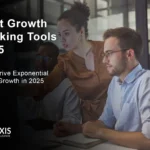In a world where artificial intelligence makes critical decisions—from who gets a loan to who gets hired—the margin for error is razor-thin. The “Keeper AI Standards Test” isn’t just another checklist. It’s an enterprise-grade benchmark built to ensure your AI models are not only powerful but also responsible, transparent, and compliant.
This guide dives deep into the framework, covering its ethical foundation, architectural structure, sector-specific application, and how it measures up against competing standards. You’ll walk away with more than just definitions—you’ll gain the insights needed to turn your AI deployment into a trustworthy asset.
What is the Keeper AI Standards Test?
The Keeper AI Standards Test is a multi-dimensional framework designed to assess whether an AI system meets essential standards for fairness, transparency, safety, and reliability. Originally developed to align AI models with regulatory and ethical norms, it functions like a rigorous certification process for enterprise-grade AI deployments.
It is often described as the ISO 27001 of AI—not because it is a legal requirement, but because it’s rapidly becoming the de facto standard that distinguishes credible AI initiatives from the rest.
Why Enterprises Need Ethical AI Standards
AI has outpaced traditional governance models. The Keeper Test offers a solution by translating abstract principles like “do no harm” into measurable, testable checkpoints. This is crucial when algorithms impact:
- Credit approvals
- Diagnóstico médico
- Legal risk assessments
- Employee surveillance
With AI regulations like the EU AI Act and U.S. Algorithmic Accountability Act on the rise, enterprises that embrace standards now are far more resilient to compliance turbulence later.
Keeper AI Standards Test: Core Evaluation Dimensions
Ethics & Fairness
The framework demands measurable accountability for:
- Demographic parity in outputs
- Historical data bias evaluation
- Intentional/unintentional discrimination detection
Security & Robustness
Keeper ensures AI models:
- Resist adversarial attacks
- Maintain integrity under data drift
- Are sandboxed and monitored continuously
Transparency & Interpretability
Features include:
- Model explainability (LIME, SHAP integration)
- Audit trails of decision logic
- Natural language summaries for stakeholders
Performance & Accuracy
Beyond F1-score and ROC AUC, Keeper includes:
- Real-world outcome consistency
- Feedback loop performance under concept drift
The Three-Layer Framework Explained
1. Environment Layer
This covers laws, regulations, social norms, and stakeholder pressures. For instance, models deployed in Europe need GDPR-aligned data governance structures.
2. Organizational Layer
Ensures AI systems are aligned with internal governance:
- AI ethics boards
- Internal AI risk ratings
- Documentation SOPs
3. AI System Layer
This technical core includes:
- Data lineage tracking
- Model governance (versioning, rollback)
- Live monitoring dashboards
Methodology and Evaluation Tools
Keeper’s assessments rely on pre-, mid-, and post-processing evaluations:
- Pre-processing: Dataset analysis (bias scans, missing value logic)
- Mid-processing: Model behavior testing (synthetic perturbation)
- Post-processing: Result audits (statistical divergence, fairness indices)
All modules can be API-connected into CI/CD pipelines, enabling continuous auditing.
Real-World Applications Across Industries
Sanidad
- Detects model drift in clinical diagnosis tools
- Ensures transparency in symptom-to-treatment predictions
Finanzas
- Bias detection in loan approval models
- Auditability for regulatory review (e.g. Dodd-Frank compliance)
Sector público
- Prevents discriminatory policing algorithms
- Assists in transparent citizen scoring systems
Fabricación
- Predictive maintenance with explainable failure models
- Safety-critical AI verification in robotics
Casos prácticos
Bias Mitigation in Hiring
A Fortune 100 company integrated Keeper into their recruitment AI. Results:
- 32% decrease in racial and gender disparity in shortlisted candidates
- External audit approved model under EEOC guidelines
Compliance Audit in Banking
A large European bank used Keeper to prep for AI regulatory inspections:
- Identified hidden model features tied to age
- Updated internal documentation for AI transparency board
Comparison: Keeper vs Other AI Standards Frameworks
| Característica | Keeper AI | NIST AI RMF | ISO/IEC 23894 |
|---|---|---|---|
| Ethics Integration | ✅ | Parcial | ❌ |
| Casos de uso en la industria | ✅ | ✅ | Parcial |
| Real-Time Evaluation Tools | ✅ | ❌ | ❌ |
| API Integration | ✅ | ❌ | ✅ |
| Sector Adaptability | ✅ | ✅ | Parcial |
Retos y limitaciones
- Not yet a globally recognized ISO/IEC standard
- Requires high initial setup cost
- Deep technical literacy needed for full audit integration
But as enterprises face increasing pressure for AI accountability, early adoption is proving a competitive advantage.
The Road Ahead: Evolution of the Keeper Framework
Planned upgrades include:
- Autonomous feedback-loop correction
- Dynamic benchmarking against peer models
- Compliance presets (e.g. EU AI Act templates)
Expert Insights & Best Practices
- “Treat AI like finance: audit it continuously.” — M. Riley, Chief AI Auditor, Octavia Bank
- “Keeper isn’t a luxury—it’s a necessity.” — D. Mendez, Director of AI Ethics, AeroMetrics
Tips for Implementation:
- Run Keeper alongside MLOps pipelines
- Start with low-risk models to pilot
- Involve compliance and legal teams early
FAQ – Keeper AI Standards Test
What is the Keeper AI Standards Test?
It’s a framework for evaluating AI systems on ethics, transparency, security, and performance.
Who should use it?
Enterprises deploying AI at scale—especially in regulated industries like finance, healthcare, and law.
Is Keeper AI mandatory?
Not yet, but it aligns closely with emerging global regulations like the EU AI Act.
Can Keeper integrate with existing AI platforms?
Yes. Its API-first design supports integration into platforms like AWS SageMaker, Azure ML, and DataRobot.
How long does a full Keeper evaluation take?
Typically 2–6 weeks depending on system complexity.





